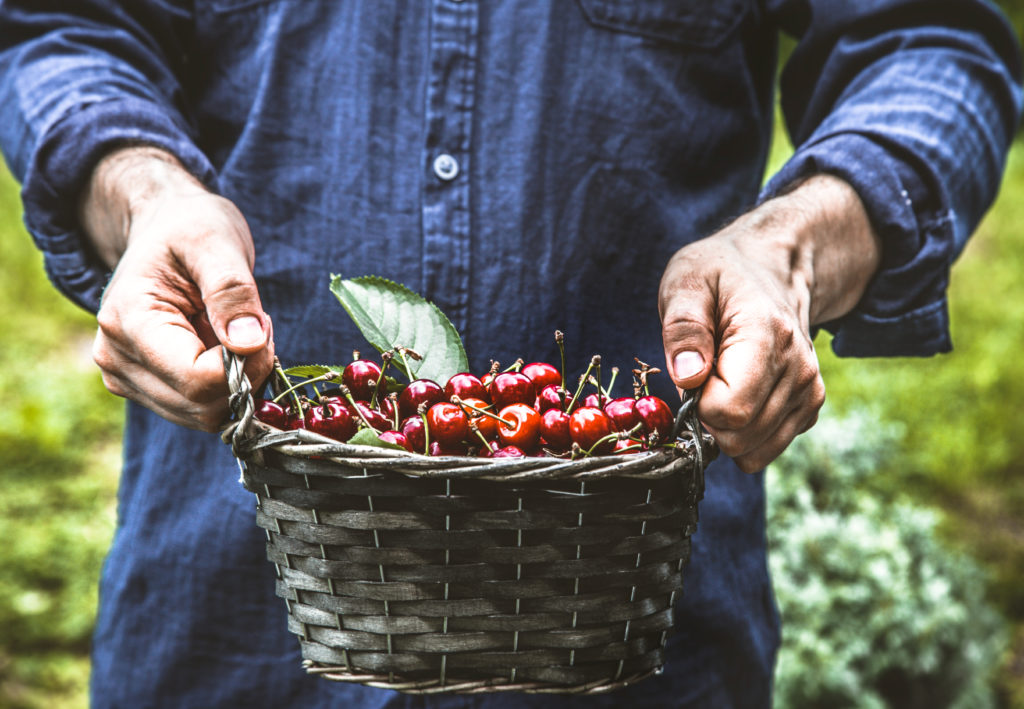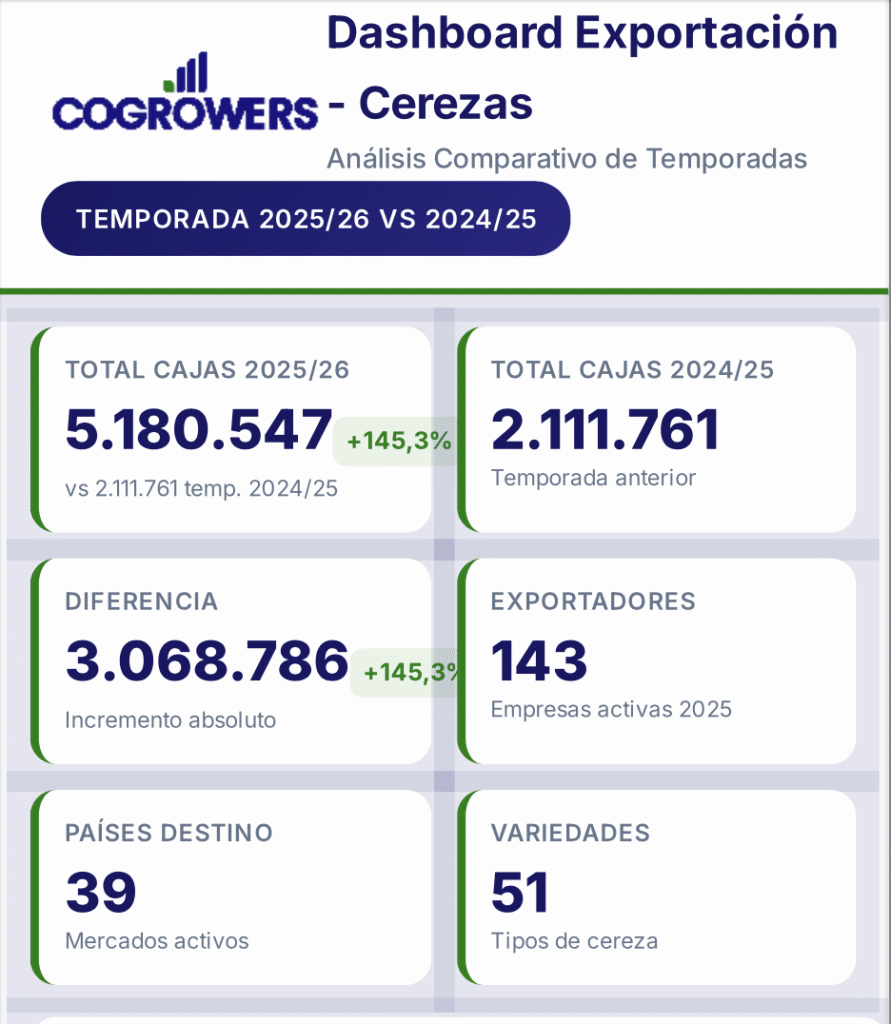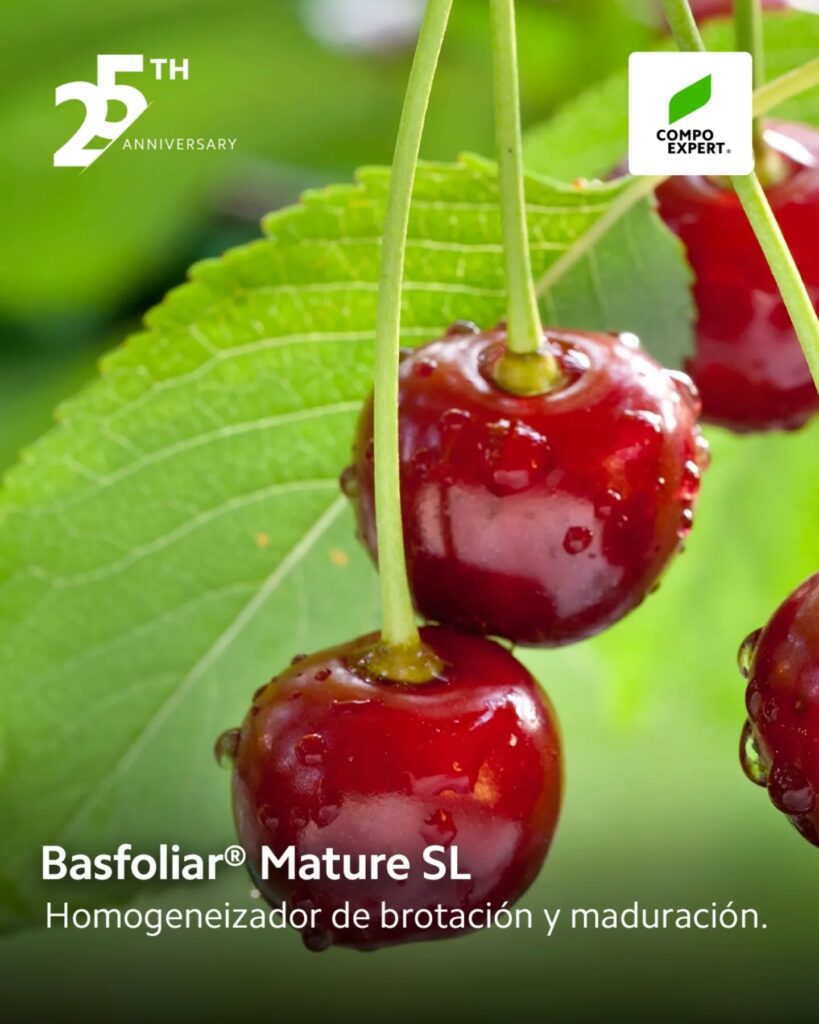By: Carlos Tapia T. Agricultural Engineer M. Sc., Specialist in cherry production, Technical Director Avium / Pomanova Corporation
Bruno Tapia Z. Agricultural Engineer, Technical Advisor Avium
Oscar Aliaga O. Agricultural Engineer, Advisor and producer of cherries, Director of OnlyCherries Consultants/ Pomanova Corporation
Victor Vicencio V. Agricultural Engineer, Advisor OnlyCherries Consultants
LARGEST PRODUCER AND EXPORTER IN THE SOUTHERN HEMISPHERE
In order to properly address the technical challenges of cherry, it is first necessary to be clear about the position we occupy in the markets. Our country represents around 5% of the total world volume, ranking 6th in a ranking led by the United States and Turkey (World Sweet Cherry Review, 2018). However, Chile participates in around 251 TP3T of world exports, and, put into the context of the southern hemisphere, our cherries according to the results of the 2019-2020 season have constituted more than 941 TP3T of the shipments from the southern hemisphere “counter-season”. We are followed far behind by South Africa, Argentina, Australia and New Zealand. (Isabel Quiróz – iQunsulting 2020).

ArgentinaWith approximately more than 3,000 hectares (ha), it is very difficult for the country to significantly increase its planted surface area, mainly due to social problems related to the availability of labor and commercial problems regarding the possibility of entering the Chinese market, rather than climatic or soil problems. However, the first shipments to the Asian country were recorded in the last season.
South Africa It has very low accumulation of winter cold (latitude 26º) for cultivation, therefore, its productive potential is low, although its warm climate allows it to come out a little earlier than Chile. In addition to an increasingly important limitation of water availability.
Australia and New Zealand They face a low availability of labor to grow fruit, especially in their cherry-producing area, in addition to the high cost of growing fruit in these countries.
There are two important windows to fill, one early (October) and one late (March) between the end of Chilean shipments and the beginning and end of the Northern Hemisphere season. In terms of having a “365” (year-round) supply of cherries, this may be achieved one day, although it will be in very small proportions during the transition periods between Southern and Northern Hemisphere production. Therefore, Chile will maintain its share of 80% of Southern Hemisphere exports for several more years.
Figure 1. Fresh cherry supply by country and region of origin (Voigt, 2017).

CLIMATIC DIVERSITY AND DIFFERENT PRODUCTION AREAS
One of the particularities of production in Chile is its wide production area, from latitude 32º (Ovalle) to latitude 46º (Chile Chico), generating a fruit supply, for the moment, from October to February, concentrating 80% of the fruit volume between the O'Higgins Region and the Maule Region (IQonsulting, 2020) with fruit volumes concentrated in the second half of December to the first week of January (Table 1)
In the central-northern area, the northern sector of the Metropolitan region and the regions of Valparaíso and Coquimbo, there is great potential for producing early cherries in places where the accumulation of cold is sufficient, however, the supply of varieties with low winter cold requirements is very limited. Currently, projects for this crop are being initiated in some localities of Ovalle and projects are being reactivated in the Valparaíso region and the Metropolitan Region.
Among the different production areas, a great diversity of microclimates can be seen when we move from north to south and from east to west, many microclimates to discover, therefore, knowing and studying the climate of each place becomes essential to design new cherry projects in the coming years.
Table 1: Window and volumes of fruit exported in the last 5 seasons, differentiated into early, mid-season and late fruit.

Source: OnlyCherries Consultants with Asoex database.
Figure 2: Distribution of the main cherry producing areas in Chile.
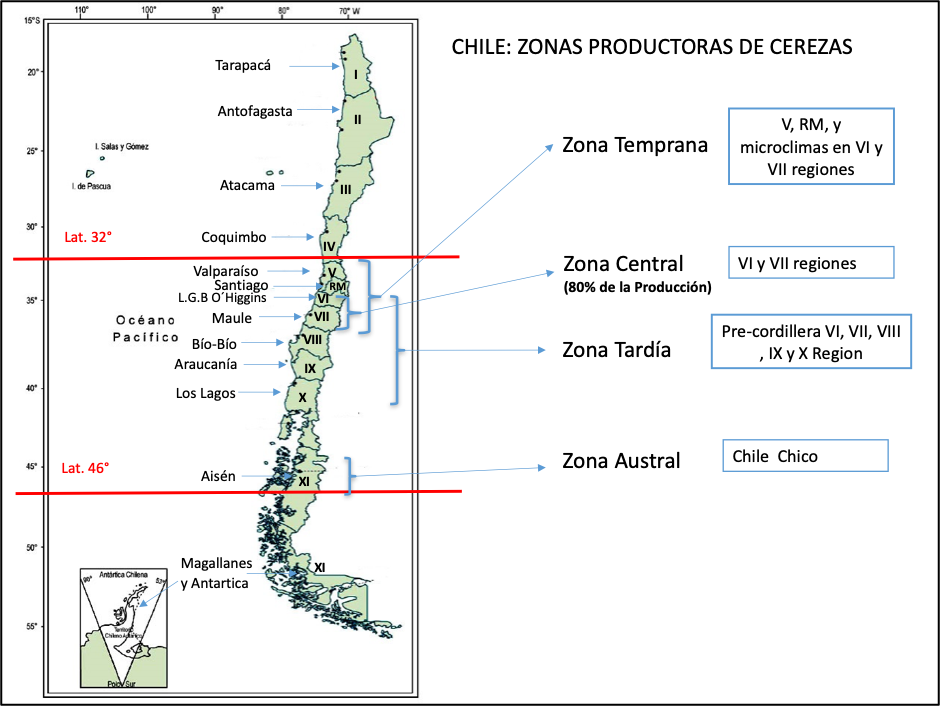
Source: OnlyCherries Consultants.


INCREASE IN SURFACE AREA AND DEMAND FOR OBTAINING HIGH QUALITY FRUIT “PREMIUM CHERRIES”.
It is important to recognize that plantations in Chile are growing at rates close to 12% annually. In recent years, plantations are being planted at a rate of more than 5,000 ha/year and there is a rate of uprooting old orchards of 2%. The current surface area is estimated at more than 45,000 ha.
Due to the great interest in planting cherries, we will undoubtedly reach very high volumes as an export offer, we will have many cherries and the segregation will be by variety and quality of fruit. Low quality fruit (size, firmness, flavor, condition and health) will become a commodity and quality fruit will be the one that will sustain the business over time. This is the mechanism to maximize the objective and increase the efficiency of the orchards.
In this context, it is necessary to design and maintain increasingly efficient production systems, orchards that are more friendly to harvest management, more efficient administration management, and more environmentally friendly production and increasingly precise management in terms of nutrition and irrigation.
The production system involves a series of decisions to be defined, such as the variety/rootstock combination according to the soil and climate conditions, the training system, the planting frame, among other factors. Although there are several parts of the puzzle that must be defined, the CLIMATE is considered the most relevant and determining factor in the success or failure of the project, the rigorous study of factors such as the accumulation of winter cold, the risk of frost, rain during flowering and pre-harvest, the presence of hail, wind, relative humidity, heat accumulation (degree days), among others.
Table 2: Winter chilling requirements, chilling portions and chilling hours of the main varieties grown in Chile.
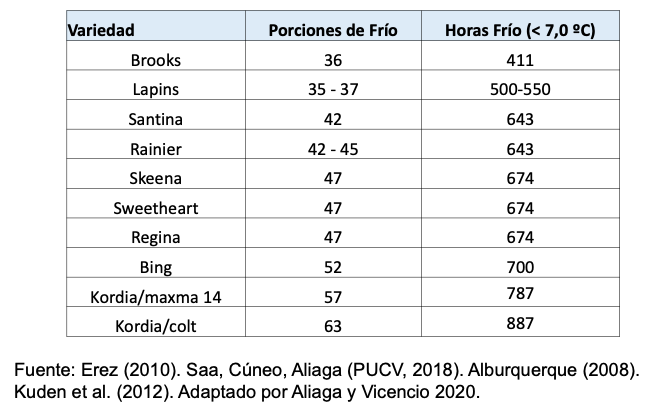
For example, to determine the appropriate rootstock for the type of soil, light, loamy or heavy. And then consider the rootstock-variety combination. In general, one should avoid using a variety with low setting (or fertility) on a vigorous rootstock; and for more setting varieties, use rootstocks with less vigor, also considering that the rootstock with less vigor provides a smaller size potential (Figure 2).

Figure 2. Cherry rootstocks most commonly used in Chile. Comparison of vigor with respect to Colt. (Tapia 2017)
Leaving aside the climate and soil conditions for the rootstock-variety combination, if it is of medium to high vigor, a system that dilutes it is chosen, Y-trellis, multi-axis or KGB. If the vigor is medium to low, a higher density axis system is the option, considering a touch of modernity: higher plant density, with simpler structures, trying to induce the entry into production as quickly as possible.
It is very important in this analysis to “read” the producer, his expertise, your desire and how conservative or innovative you can be, considering what you feel comfortable and safe with and what is the best alternative in each case.
Recognizing the productive potential of orchards, considering maximizing it in terms of kilos and fruit condition, is the basis for deciding the line of technical management, both in cultural tasks such as pruning, load regulation, and programs adjusted to reality in nutritional proposals based on fertilization programs. With this, the characteristics of each variety (together with the rootstock) must be respected and understood and work on that basis.
Among the quality parameters, the objective is to maximize the quality potential of each variety, since it seems that its characteristics are predetermined in terms of size potential, sugar (ºBrix), firmness and dry matter (%). These data (Table 1), which were collected in commercial orchards and evaluated for each fruit individually (n=) in different investigations during the last 7 seasons (Source: Carlos Tapia – Avium 2018) can be important when making a quantitative analysis in each project.
Table 1. Fruit weight differential by size category and variety. Dry matter, soluble solids and Durofel. (Source: Carlos Tapia – Avium 2018).

In coordination with this data, a minimum acceptable quality must also be ensured and in nutritional terms it must contain a balance between elements to ensure travel condition (Figure 3). According to data that has been collected during the last seasons (Source: Carlos Tapia – Avium 2018) comparing each category with respect to results obtained in practice at each site studied. Although they are data that need to be refined over time in terms of ranges and relationships between nutrients, it is a first approximation of the production objective.
Figure 3. Nutritional and dry matter content (%) of strawberry cherries for export from Chile (Source; Carlos Tapia – Avium 2018, unpublished data).

It is important to establish production parameters in the orchards according to the variety and their respective combinations that ensure production volume focused on maintaining a uniform and consistent fruit quality. Also at a commercial level, Premium labels that guarantee this type of fruit. These two factors will be the most important in keeping this business profitable and sustainable over time.
Evolution is news in development and there is still much to develop and understand about this very particular spice, which will undoubtedly continue to keep Chile at the top of the “premier league” of cherry production worldwide.
References.
Tapia C. 2017. Technical challenges to maintain Chile’s strong position in cherry production. Red Agrícola Magazine, August 2017 edition. pp. 32-37. Santiago, Chile.
Quiroz I., 2020. Yearbook 2019/2020. International Cherry Market. iQonsulting. Santiago, Chile.
Tapia C., 2018. Most influential factors of productive potential and fruit quality in cherry. Red Agrícola Magazine, August 2018 Edition. pp. 46-50. Santiago, Chile.
Tapia C. 2018. Technical analysis of the most influential factors in the productive potential of cherry trees. Presentation of the Avium Full Day Cherries seminar. July 4, 2018. Curicó, Chile.
Voigt F. 2017. Cherry production in South Africa and new initiatives. 8th. International Cherry Symposium. June 5-9, 2017. Yamagata, Japan.
Belrose, inc. 2018. World Sweet Cherry Review.


